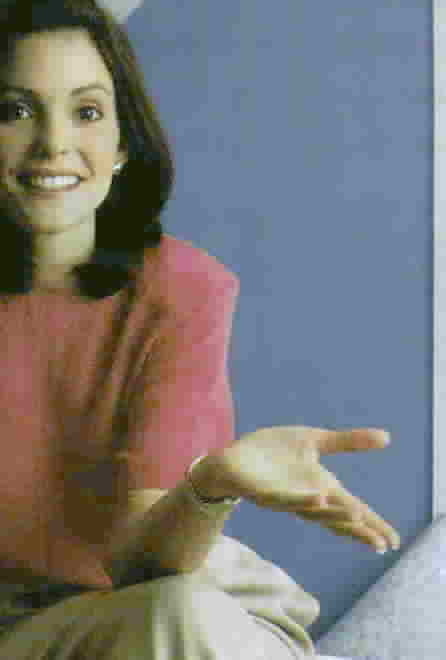BODY LANGUAGE

Does his body say that he's an easy man to
beat? Does her body say that she's a phoney? --Book jacket of Body Language (1970)
Anatomical signs.
1. "The bodily gestures,
postures, and facial expressions by which a person communicates nonverbally with others" (Soukhanov 1992:211).
2. "Body language and kinesics are based on the behavioral patterns of
nonverbal communication, but kinesics is still so new as a science that its
authorities can be counted on the fingers of one hand" (Fast 1970:9).
Usage: "Body language," the lay term for "nonverbal communication," was popularized in 1970 with the publication of Body Language by Julius Fast. Though college textbooks (e.g., Burgoon et al. 1989) omit references to the book and its author, Julius Fast--more than any academic--brought public attention to the expressive force of gestures and body-motion cues.
The negative. On the downside, Fast oversold body language to the public by suggesting (on the book's dust cover) that kinesic cues could be used to tell if one was "loose" (i.e., too sexually receptive), "hung-up," "lonely," or "a manipulator." And, despite Fast's repeated warnings to use caution when interpreting body-language, arm-crossing, leg-crossing, and other nonverbal signs came to be overly meaningful signals in popular magazine and newspaper articles (i.e., as negative, defensive "barriers" to rapport).
The positive. On the upside, body language has entered the lexicon as a phrase with which to label a key channel of human communication apart from spoken and printed words. Body Language has gone through dozens of printings, and is still available in bookstores today. Moreover, thanks to research completed during the 1990-2000 Decade of the Brain, many of the nonverbal signs and cues Fast wrote about in 1970 now have meanings backed by neuroscience (see, e.g., NONVERBAL BRAIN).
The promise. "The science of kinesics has added a new dimension to human understanding. BODY LANGUAGE can make you a more perceptive human being, and it may influence your approach to every relationship in which you are involved" (dust jacket of Body Language, by Julius Fast).
Media. "The dynamic personality [i.e., the body
language] of Humphrey Bogart dominates the whole picture, and his playing in the
leading role is a fine example of the value of dramatic under-emphasis and
intelligent modulations in voice and expression" (Today's Cinema review
of 1947 movie, Dead Reckoning [Columbia; cited in Frank
1982:49]).
E-Commentary: "I am
writing to you from the British Broadcasting Corporation, in England. We are
developing an idea for a television documentary on body language--how to read
it, and how to modify your own body language in order to control the impression
you give other people. We are particularly interested in how public figures and
celebrities are increasingly aware of the importance of their own body language
in preserving a positive public image.
"Our proposed documentary will be
for Discovery Channel USA, and will feature a well known British
zoologist-turned-presenter with an expertise in body language. We are looking
for contributors with an expertise in reading body language. I would very much
like to know more about your research and the Center for Nonverbal Studies."
Susie Painter (4/2/01 9:59:44 AM Pacific
Daylight Time)
See also BODY
MOVEMENT.
YouTube Video: Watch a short video on Body Language
Copyright 1998 - 2016
(David B. Givens/Center for
Nonverbal Studies)
Photo of friendly, engaging, welcoming palm-up cue (see PALM-UP elsewhere in The Nonverbal Dictionary; picture credit: unknown)